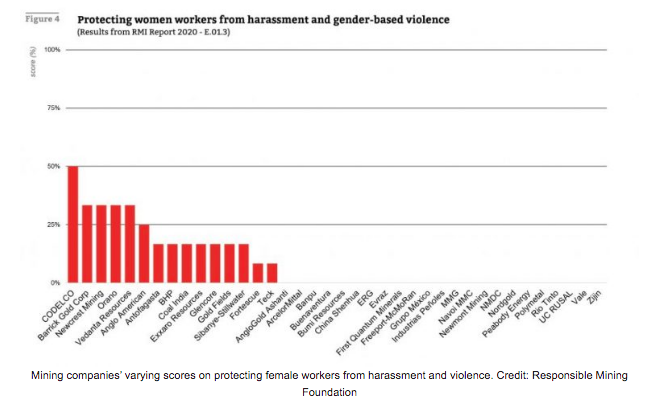Is gender inequality mining’s ESG blindspot?

Despite an increasing focus on ESG, mining companies are failing to consider the disproportionate effects of mining on women and girls, says a report released Monday by independent research organization the Responsible Mining Foundation.
While miners are starting to look seriously at increasing the proportion on women at the board and senior management level, most companies aren’t even attempting to assess the impact of their operations on women.
The report, entitled Gender inequality runs deep in mining, looked at the gender-related ESG policies of 38 large-scale mining companies, from tracking and reporting diversity at the board level to measures supporting local procurement from women.
The report found that the most progress was at the top levels of companies, with less progress in terms of policies affected female workers, and very little in terms of women in mining-impacted communities.
The report found that the most progress was at the top levels of companies
The majority of companies are tracking and actively trying to improve the number of women on their boards (30 of 38 companies), but at the worker level only seven companies have policies ensuring female workers have personal protective equipment that fits (Newmont and UC Rusal earned the highest scores on this metric; the companies in the report include a mixture publicly traded, private and state-owned companies).
Only fifteen companies have policies to help protect female workers from harassment and gender-based violence, and according to the report, “none of the assessed companies is able to show systemic action on this issue.”

In order to support gender equality, companies need to be aware of the effects of their operations on women, the report notes, especially as women face increased health, economic and social status risks due to mining. However, the report found “virtually no evidence” of companies attempting to regularly assess their impact on women.
“Even positive actions on community engagement and investment, if conducted without due consideration of gender issues, can further disadvantage women,” the report reads.
“Such gender-blind interventions at best perpetuate, and potentially exacerbate, existing discrimination and marginalization of women. This is particularly true where women face additional barriers due to, for example, their age, religion, ethnicity, or access to economic resources.”
Gender-blind policies in procurement, for example, can punish women. While the majority have policies addressing the development of local procurement opportunities, only nine companies had policies aimed at the inclusion of women.
“Only a small minority of companies take proactive measures to include women in their local procurement support measures, and without such measures, women will most likely be excluded,” notes the report.
The report includes several suggestions that companies can take to make progress on gender inequality. These include: development of a company-wide gender equality policy, a review of existing policies to check for unintended gender bias, tracking and reporting of data including recruitment and retention by gender, and open dialogue with women within the company and in local communities about their concerns.
(This article first appeared in the Canadian Mining Journal)
More News
South32 third-quarter manganese output misses estimates
The world's biggest producer of manganese ore produced 476,000 wet metric tons last quarter.
April 16, 2025 | 03:48 pm
Alcoa reports $20 million tariff hit on imports from Canada
April 16, 2025 | 03:42 pm
{{ commodity.name }}
{{ post.title }}
{{ post.date }}




Comments